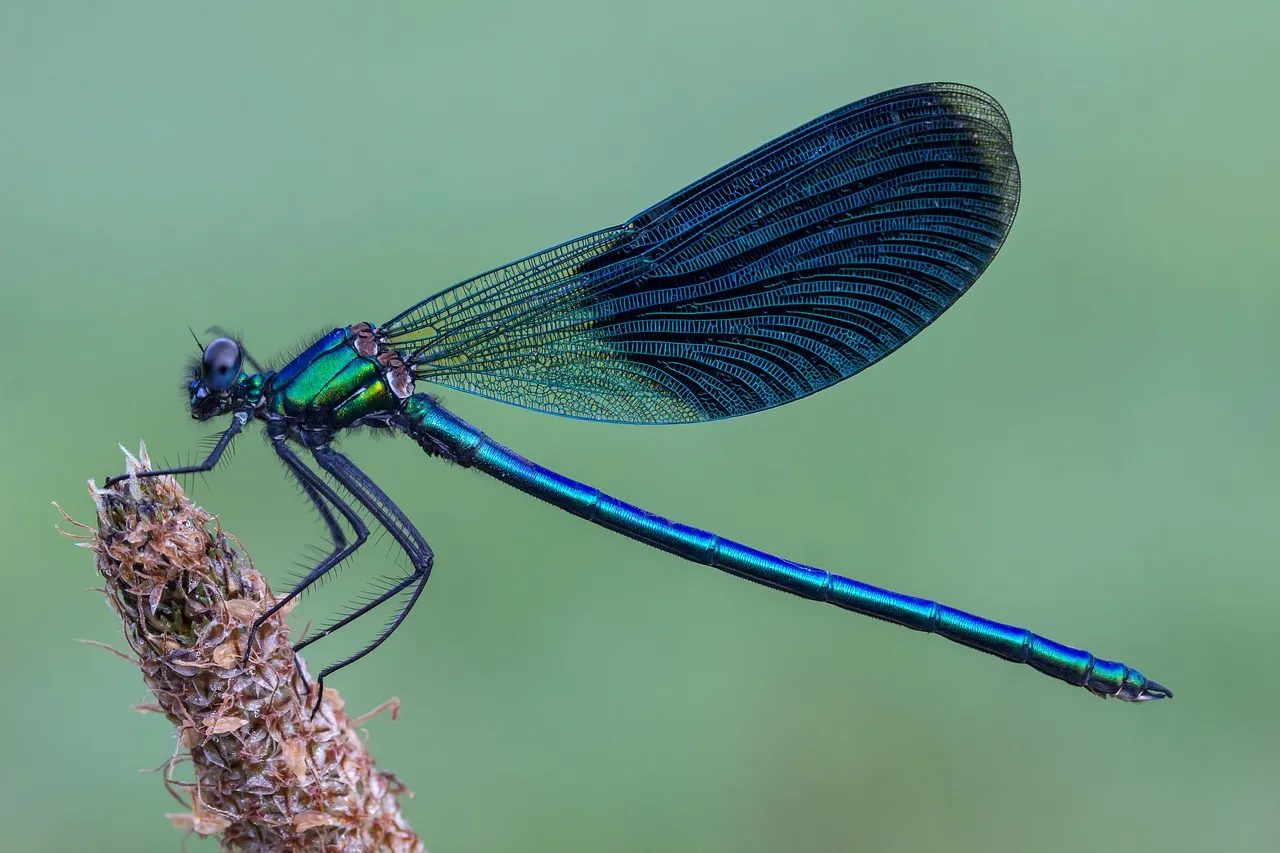
A dragonfly flies from the creek and over the meadow to the big green lawn. She is a big girl, with a long, blue body, by far the largest insect in the park that evening. And round and round, above the fresh cut grass, this beautiful predator rides in search of prey.
The gnats: she can have them. Never had any use for gnats. They’re like small flies that don’t bite, so they’re not terribly offensive. But they often swarm a few feet above the ground on humid evenings. So if you’re doing anything active, such as running or riding a bike, then you’re guaranteed to get some extra protein if your mouth is open, plus they end up in eyes and nostrils.
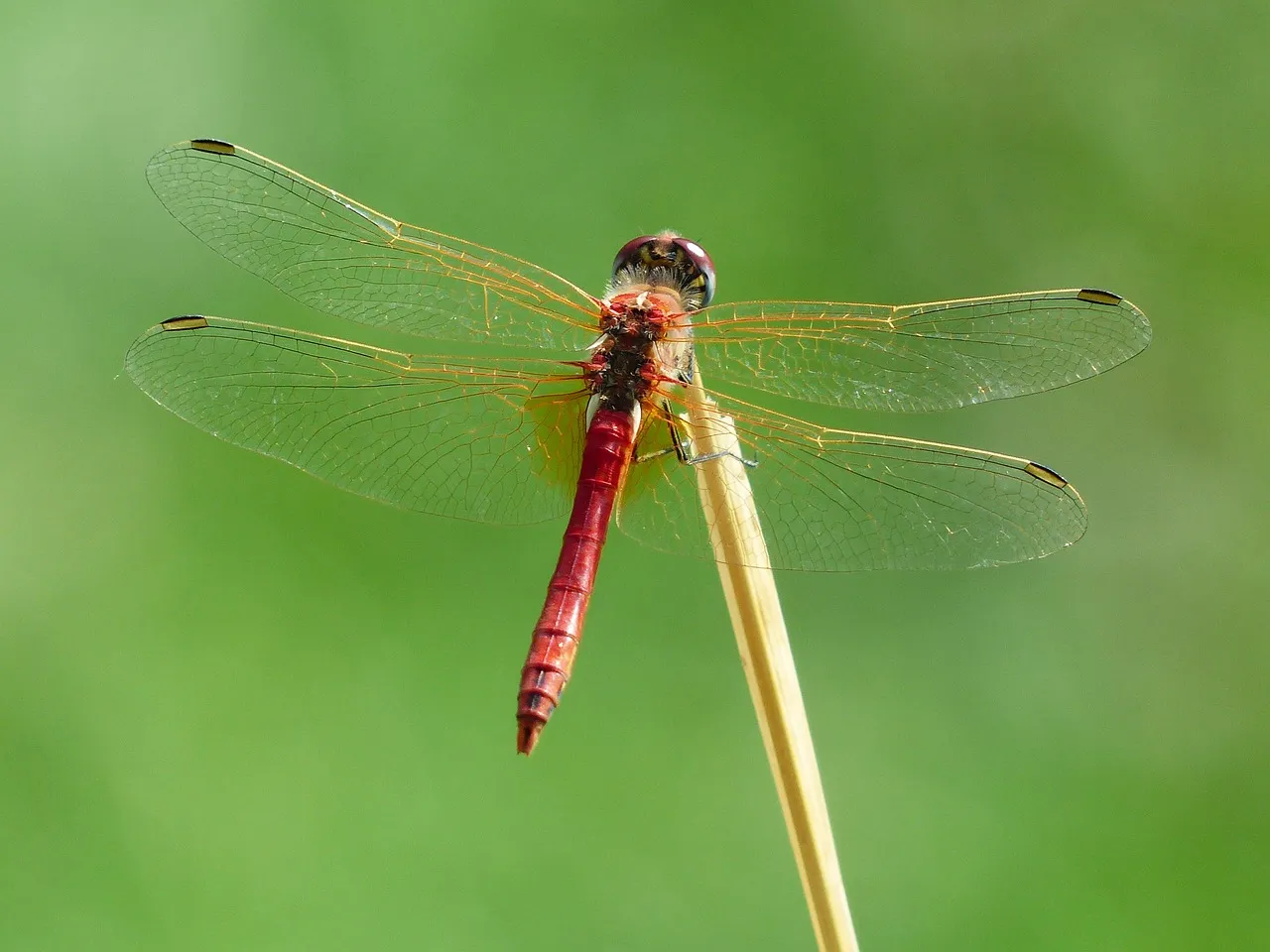
The mosquitoes: please take them. If ever a human being liked mosquitoes, I have yet to meet that person. These are pests of the highest order, which is to say they are the lowest form of life. Plenty of people who do not like the idea of genetic engineering change their tune when it comes to mosquitoes. Could an innocuous mosquito be created that disrupts the breeding cycle of the others and drones all the disease-carrying monsters to a mosquitoey grave? Yes, I’ll raise my hand and support genetic engineering there if side effects are limited. Get rid of these awful things.
If a dragonfly can eat a few mosquitoes, she is very, very welcome up there. I see her buzzing above the lawn at the park where my kids and I are playing whiffleball. Please, dragonfly, take those mosquitoes and gnats. We don’t want them. You are welcome here.
Dragonflies are fearsome predators. When you see macro pictures, showing their heads and bodies close-up, you can begin to imagine what a poor mosquito feels like when one of these enormous, predacious helicopters buzzes in. Have you see their mandibles, those jagged insect jaws? Imagine them many times larger and those would fit in a scene from a horror movie. Dragonflies can crush the bodies of little flies and make instant noodles out of them.
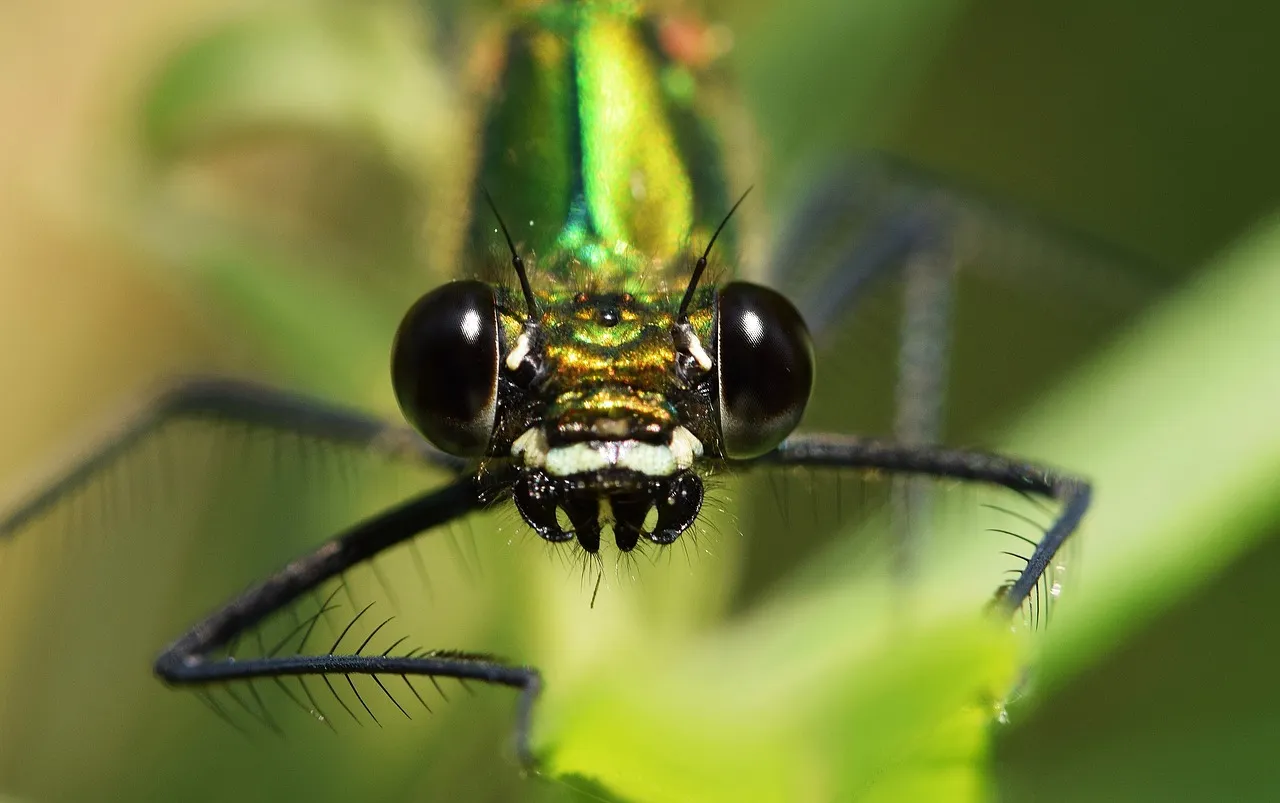
As I stand in the shallow outfield, waiting for one kid to throw the plastic whiffleball and the other to hit it, I notice the dragonfly making one pass after another, far above my head. Well, it’s not that far, maybe 15 feet off the ground. But it’s well above my head, which is some consolation. In fact, it’s beautiful to watch. With the sunlight fading, I can’t see what color it is, but I imagine blue.
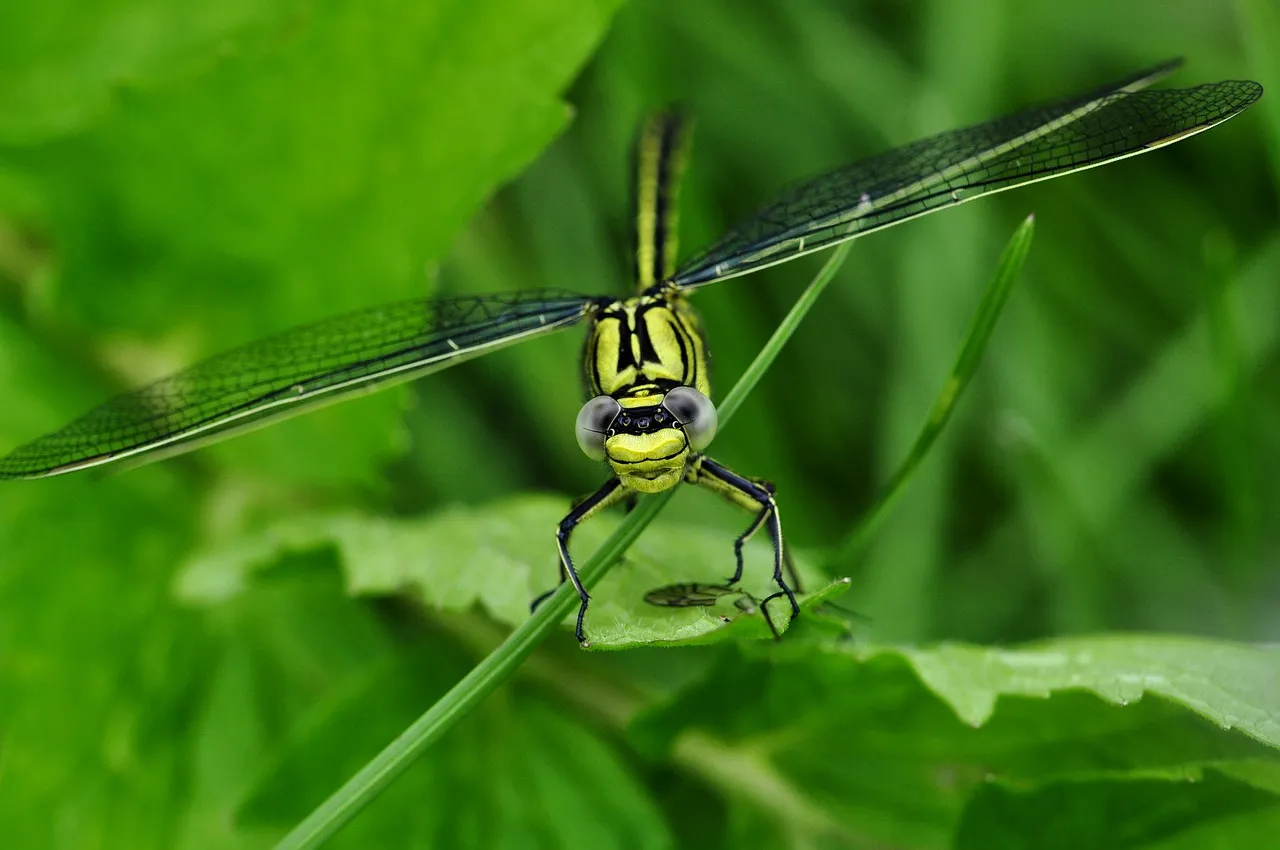
I miss the ball again because my kid is pulling these pitches. Her sister lobs them in slowly and then she crushes them to the left side of the infield, which is typical for a right handed hitter. As the designated fielder, I finally take the hint and begin my shift toward the third base side, playing a deep shortstop. I might have a chance of catching something over here, because that is where she’s been hitting most of them.
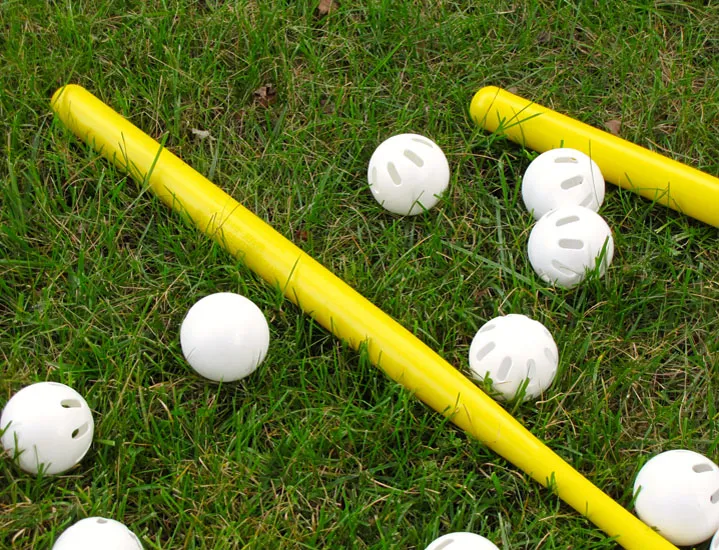
Source: Whiffle.com
And here’s the next pitch from her sister. Underhanded. A plastic-on-plastic crack-thump! And the tiny whiffle ball sails high. She hits a fly ball over my head, but it’s high. That should give me time to get under it and catch it. I backpedal beneath it and watch as the next scene plays out in slow motion.
All of us are watching the ball and watching that other object coming for it. The dragonfly is hunting this ball; I’m not kidding. From a few feet away, she makes an adjustment and heads straight for it. As the ball nears its height and begins to curve downward in my general direction, the dragonfly hits it, going fast. We hear a sickening buzzing sound. I can only imagine this is what happens when a spinning plastic sphere with holes in it impacts the rapidly moving wings of a dragonfly.
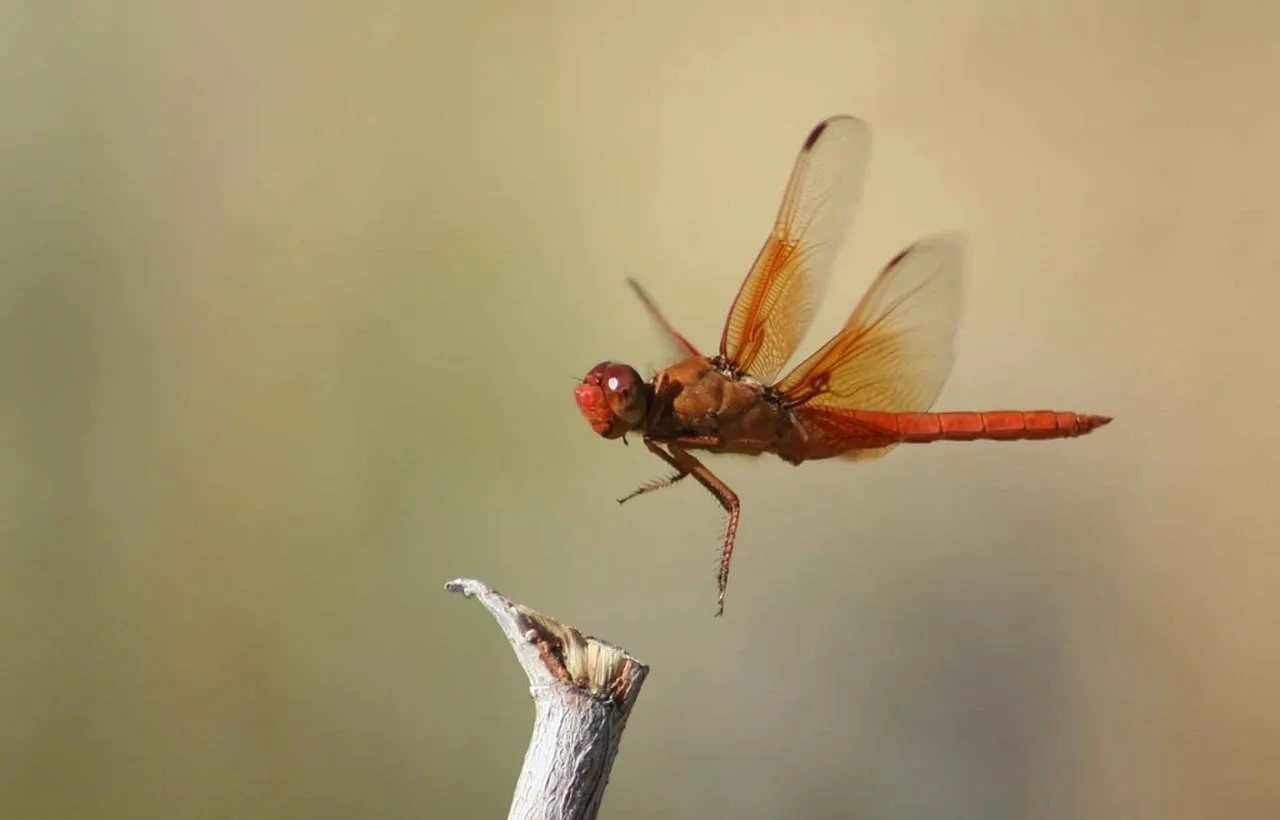
It’s an awful scene. None of us wants to watch this, but we cannot look away.
The ball bumps off the dragonfly and goes spinning off at an angle, heading behind second base. But none of us is watching the ball anymore. The dragonfly has been felled in flight and she begins to drop. Then she springs into action and tries to flap. It’s a sad thing to watch. She flaps and flops and gyrates spastically in the evening air. She looks like she’s been hurt badly.
As gravity takes its course and she falls closer to the ground with each flap, another object appears, heading straight for her. It’s one of the gray birds that sits on a fence post and chases gnats. With dusk coming and the sunlight disappearing, it’s somewhat surprising to see a bird out this late. She must be in search of one last meal.
And she’s in luck because she’s caught the big dragonfly in its final descent. Just before it hits the ground, this bird snatches it in her long beak, and off she goes to enjoy it or share with her chirpy birdlings in a nest somewhere. It’s enough to feed a whole chirpy family.
For my children, who throw and then hit the last whiffleball which fells the dragonfly, shock turns to horror in about five seconds. But then, just as suddenly as the first impact, the burden of guilt is lifted. The batted ball has not caused the death of that graceful insect. Quite naturally, with a little help from us, the dragonfly becomes the regular meal of another graceful flying creature. And perhaps we’ve helped that bird catch one final meal to feed the brood.
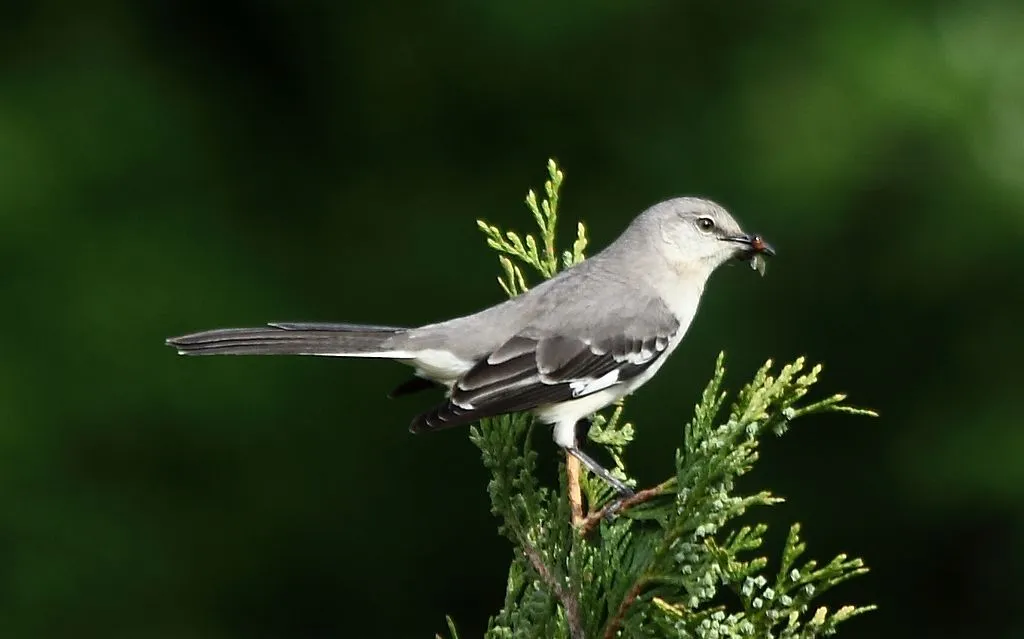
Mockingbird with meal. Creative Commons via Wikimedia.com by ForestWanderer.
Thus, life goes on for most of us. We have seen nature in action and helped it along a little bit. The stunning part is to see three separate impacts (the batted ball, the ball hitting the dragonfly, and the bird catching the falling dragonfly) all in a matter of a few short seconds. And thanks to the bird, the outcome is more satisfying than it could have been. In fact, I’m fairly sure one of my kids would have cried if the bird hadn’t come along to assuage the guilt. But with that helping hand, we head home with a story to tell.
All images are public domain unless otherwise credited.